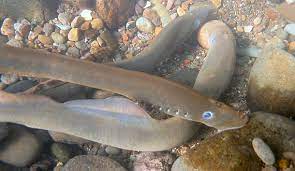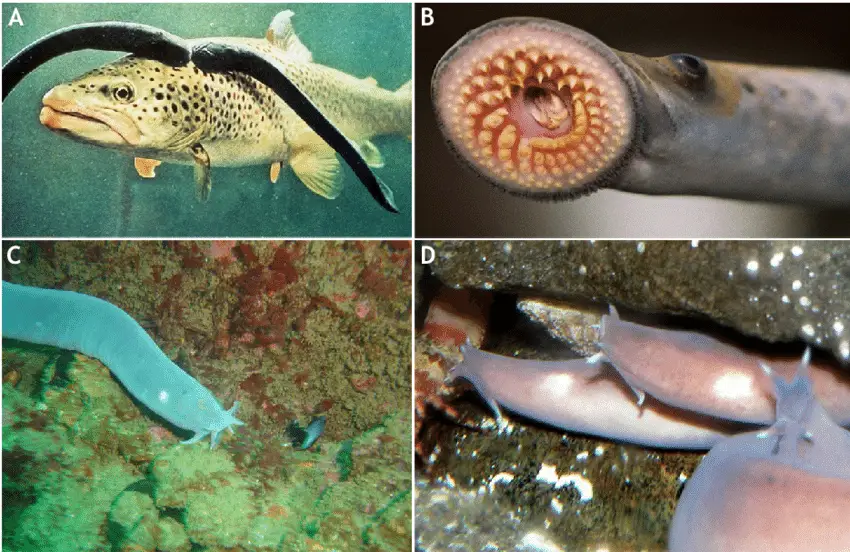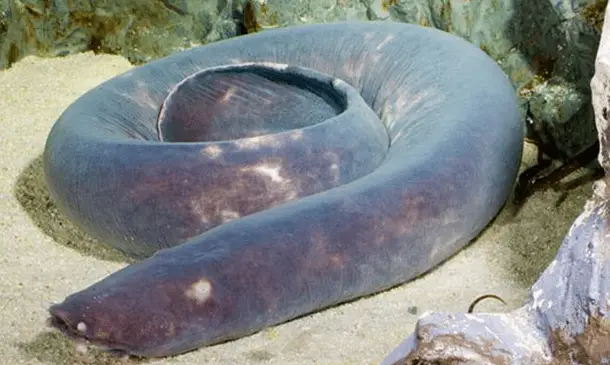Lamprey and Hagfish are two groups of class Cyclostomata, both have some common features as well as vast differences. Phylogenetically Lamprey and Hagfish evolved from two different ancestral stock so there are many striking differences present between them, based on the dissimilarity they are placed into two different order underclass Cyclostomata. Lamprey belongs to the order Petromyzontiformes and Hagfish belong to Myxiniformes, below we listed all the major differences between Lamprey and Hagfish.

Differences Between Lamprey and Hagfish:
| Lamprey | Hagfish |
| Lamprey is present in both marine water as well as freshwater but marine Lamprey migrates to freshwater during the spawn. | Hagfish all are exclusively marine and they live in the sea bottom, make burrows in the sand. |
| Lamprey in the larval stage feed on microscopic organisms but the adult Lamprey are external parasites on the bony fishes. | Hagfish also parasites on larger bony fishes but they are an internal parasites. |
| They generally feed on living fish, their rasping tongue creates a wound on the body of bony fishes, then they suck the body fluids or blood from the bony fishes. | Hagfish create pores on the body of dead fish and feed on the flesh of prey fishes. |
| The skin has a mucous gland which makes their skin slimy but the slime production is not excess. | Hagfish are popular for producing a large amount of slime on their body. |
| The fin system in Lamprey is well strong due to their support by the gill rays which are attached to the connective tissue sheath of the notochord, the dorsal fin is two. | The fin system is weak and the dorsal fin is single or may be absent. |
| The external single nostrils are present on the head near the lateral eyes. | In Hagfish the nostril presents terminally on the head. |
| On the head, two large lateral eyes are present, between the lateral eyes a median pineal eye is present on the head. | The lateral eyes are vestigial, they are covered by skin, and the pineal eye is not present here. |
| The mouth presents ventrally on the anterior side of the head, the mouth is present in the cup-shaped buccal funnel. | The mouth is present terminally on the head, the mouth is limited by the wrinkled upper and lower lip. |
| The cup-shaped buccal funnel has circular muscle which can create a sucking action that helps them to attach with the body of the prey fish, there are no sensory tentacles on their mouth. | The mouth is surrounded by sensory tentacles which present in pairs. |
| In the buccal cavity, a pair of salivary glands open, the secretion of the salivary glands have anticoagulants that prevent blood clots during sucking the blood of the prey fish. | The Hagfish feed on the flesh of dead fish, salivary glands absent in them. |
| The intestine of Lamprey has longitudinal folds known as spiral valves. | In Hagfish the intestine is straight and does not have any longitudinal fold-like structure (spiral valve). |
| The gill pouches and gill slit are 7 pairs present laterally on their head. | In Hagfish number of gill pouches and gill slits are 1 to 15 pairs |
| In Petromyzon, the mouth is engaged during attaching to the prey fish, for respiration a separate canal present, respiratory pharynx. | The pharynx is not separated it opens into the esophagus directly. |
| The primary excretory organ is paired mesonephric kidneys in Lamprey. | In Hagfish excretory organs are pronephric kidneys and mesonephric kidneys in some species. |
| The brain is well developed, the cranial nerve is 10 pairs, the dorsal and ventral roots of spinal nerves are separate. | The brain is poorly developed, the cranial nerve is 8 pairs, the spinal nerve has fused dorsal and ventral roots. |
| The internal ear of Lamprey has one or two semicircular canals. | The internal ear of Hagfish has only one semicircular canal. |
| In Lamprey, the gonad is hermaphrodite in the larval stage but in the adult stage, only one type of gonad becomes functional. | In Hagfish the sexes are not separate, the gametes present in Hagfish are hermaphrodites. |
| The fertilization occurs externally, the development is indirect or direct, the development includes a larval stage, Ammocoet larva. | In Hagfish the development is direct, does not include any larval stage. |

Reference Cyclostomata General Characteristics Features Classifications Systematic Position Affinities
Detailed Study On
Classification of Cyclostomata
Characteristics Features of Cyclostomata
Economic Importance of Petromyzon
Nervous System and Excretory System of Petromyzon
Respiratory System and Circulatory System of Petromyzon
Digestive System and Feeding Mechanism of Petromyzon
Anatomy of Petromyzon (Lamprey)

Hi Everyone!!! Welcome to Imaluop. Imaluop always try to learn some new and he want to share to other people. Here we will try to learn various topics on Science, specially on Biological Sciences.